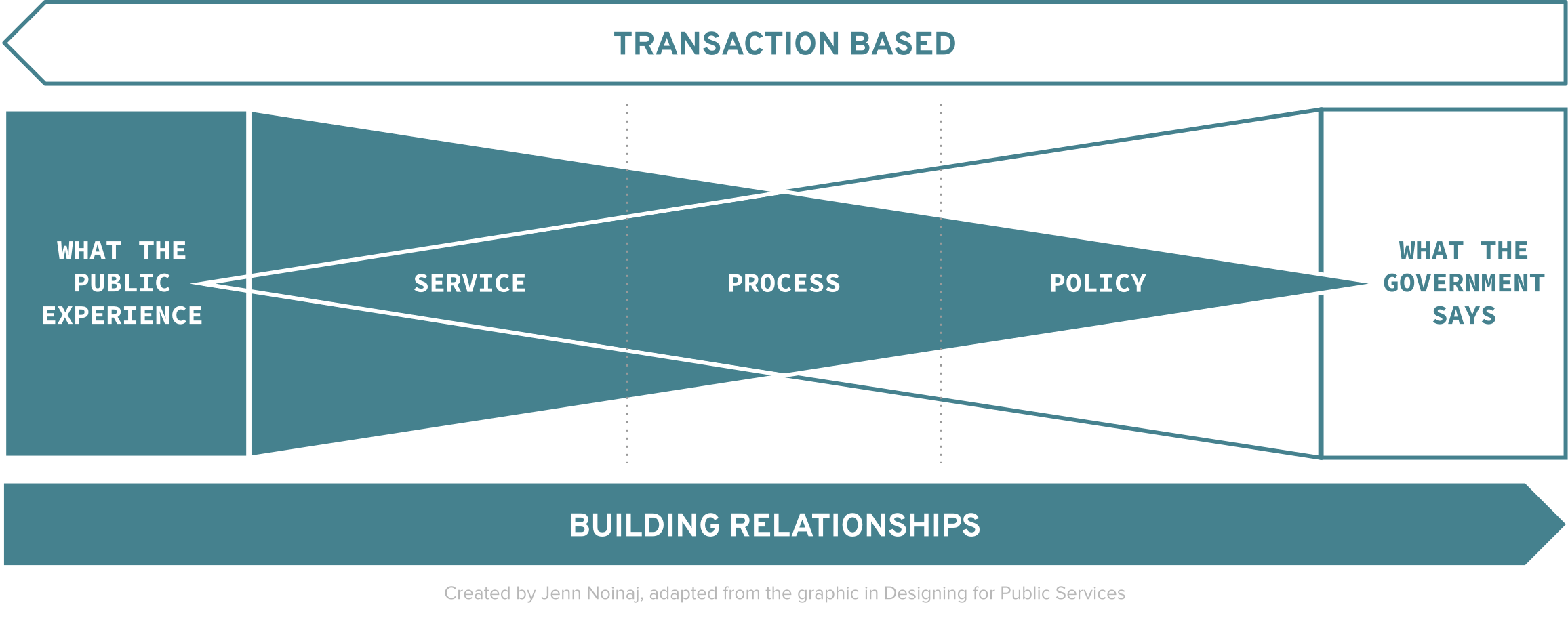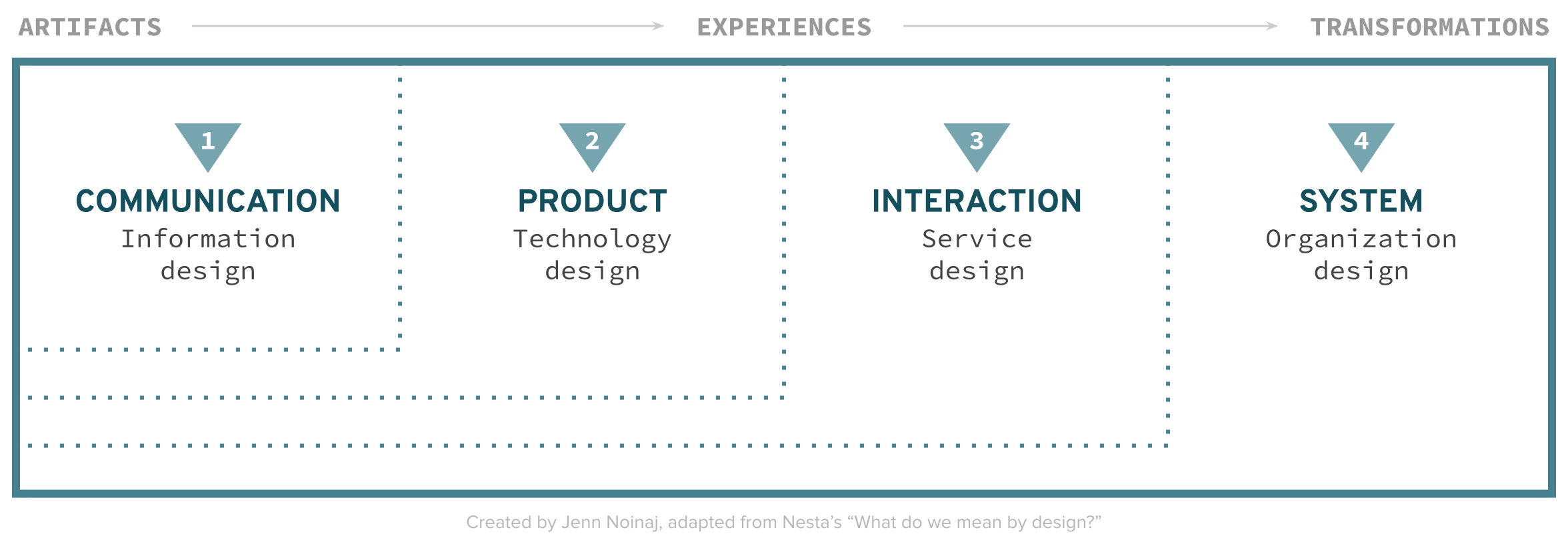 In order for us to create a government that serves the public, we have to first understand what our constituents, citizens and residents need.
In order for us to create a government that serves the public, we have to first understand what our constituents, citizens and residents need.
In my next few posts, I’ll dig deeper into human-centered design in government, such as how design can help digital transformation efforts, along with basics on getting started with user research and common design methods to use.
So what is human-centered design?
The public is at the core of what government does. It exists to serve the people. Human-centered design is a problem-solving method that puts people at the center of the problem and aims to design solutions that address the needs of the people. Too often in government, we are heads down delivering services that are bound by regulation and policy. We sometimes forget, when wading through hundreds of pages of legalese and standards, that the core of those documents is aimed at improving the lives of the public in some way. Embracing human-centered design methods can help us ensure that we can see the forest beyond the trees, and find solutions that work for the people.

Design can conjure up a lot of different meanings, from art and fashion to interior and graphics. The practice of human-centered design can be found in all of these disciplines. But specific to government, design as a field functions at four distinct levels, as made popular by Richard Buchanan in “Wicked Problems in Design Thinking.” Government has already leveraged the more traditional notion of design with visible or tangible artifacts, but to truly be human-centered, government needs to move to creating experiences and transforming systems using design.

While I can go on and on about the four levels of design, an overview of each level is below:
1. Communication-level
The first level is information design. In government, this would be how departments communicate information to the public. It’s important here to understand the context in which a person might receive the information. Often this includes mobile-friendly websites and text message alerts.
2. Product-level
The second level is technology and product design. This might be an app or program that is public or internal facing. For example, in government, forms are widely used. Form design would be an example of product-level design.
3. Interaction-level
The third level is service design. This would be the overall experience of the people interacting with government. In government, there has been an increase of customer experience offices that are operating at the interaction-level, but service design shouldn’t be siloed or considered only the responsibility of one office. In order to be human-centered, it is crucial for this to be a department-wide mind-shift.
4. System-level
The fourth level is organization design. This would be the processes, values and culture that make up the organization. In government, this would mean creating a workplace culture that is aligned with the department’s strategy. Human-centered design can be used here to foster equity and inclusion, and shape the team’s, department’s, or entire organization’s ways of working.
An Example
Putting these four levels together, imagine a scenario in which an individual is applying for a benefit.
- At the communication level, they might find out about the benefit available to them in a clear way that helps them understand that they qualify.
- At the product level, they may use an online form to complete their benefit application.
- At the interaction level, they may receive notifications about their application and easily check their application status online.
- Lastly, at the system level, the department that manages the application has a process in place for benefits management and to ensure a positive applicant experience. The department also embraces a human-centered culture on their team that aims for high applicant satisfaction.
As you can see, human-centered design is a method that’s not exclusive to designers. The Partnership for Public Service cites human-centered design as one of eight core technical competencies of a 21st-century workforce. More and more leadership courses and MBA programs are incorporating human-centered design into their curriculum. Government leaders and workers must be human-centered to truly create a government that is for the people, with processes, experiences and interactions that are focused on the needs of the people.
Interested in becoming a Featured Contributor? Email topics you’re interested in covering for GovLoop to [email protected]. And to read more from our Winter 2021 Cohort, here is a full list of every Featured Contributor during this cohort.
Jenn Noinaj is a social impact strategist, researcher and designer passionate about using design to solve society’s most pressing challenges. She’s currently leading the Public Interest Technology Field Building portfolio at the Beeck Center for Social Impact + Innovation where she works on creating solutions to make the public interest technology field more inclusive. Prior to this role, she worked in the federal government at the US Digital Service where she partnered with various agencies to transform digital services across government, building capacity in technology and design and championing a user-centric culture. You can find more about her on her website and can follow her on LinkedIn and Twitter.





Leave a Reply
You must be logged in to post a comment.